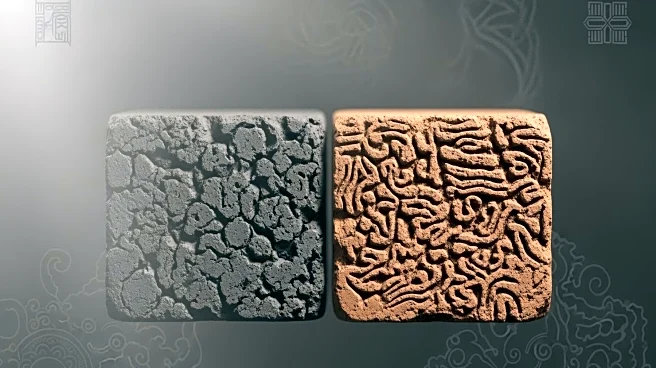What's Happening?
Recent excavations at the Yuanhetang kiln site in Suzhou have provided new insights into the production of Jin Zhuan, or 'golden bricks,' used in imperial constructions during the Ming and Qing dynasties.
These bricks were valued for their density, smooth finish, and metallic resonance. The study applied techniques such as X-ray diffraction, scanning electron microscopy, and mercury intrusion porosimetry to analyze the mineralogical composition and microstructural features of both unfired and fired brick samples. The findings reveal the microstructural mechanisms driving densification and porosity evolution in imperial brickmaking.
Why It's Important?
The study contributes new scientific insight into the technological complexity behind the production of Jin Zhuan bricks, which were integral to high-status constructions in historical China. Understanding the microstructural evolution of these bricks provides valuable information on the craftsmanship and materials used in ancient architecture. It also highlights the advanced techniques employed in brickmaking during the Ming and Qing dynasties, offering a deeper appreciation of historical construction practices.
What's Next?
Further research may explore the broader applications of these findings in the preservation and restoration of historical structures. The study's methodologies could be applied to other archaeological sites to uncover more about ancient construction techniques and materials.
Beyond the Headlines
The study underscores the importance of integrating modern scientific approaches with historical records to gain a comprehensive understanding of ancient technologies. It also highlights the cultural significance of Jin Zhuan bricks in Chinese architectural heritage.












